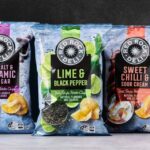This article we will take you to a nostalgic journey through the fascinating history of ice cream brands in India.
Ice cream is a sweet and creamy dessert enjoyed by people of all ages. In India, ice cream has a rich and varied history stretching back millennia. Today, ice cream remains a popular dessert and treat in India, enjoyed by people of all ages and backgrounds.
In India, where the scorching heat often calls for a cool indulgence, the journey of ice cream and ice cream brands is a tale of innovation, adaptation, and a deep-rooted love for frozen treats. This article will take a nostalgic journey through the fascinating history of ice cream brands in India.
History of Ice Cream Brands
The Early Beginnings
The concept of frozen desserts in India can be traced back to ancient times. In Sanskrit literature, there are references to a sweet, frozen confection called “shikhrani” made from milk, rice, and fruits. This early form of ice cream was prepared by freezing a mixture of milk and sugar in earthen pots.
Mughal Influence
The Mughal Empire, which ruled India from the 16th to the 19th century, had a significant impact on Indian cuisine, including desserts. The Mughals were known for their love of sweet dishes, and they introduced Persian and Middle Eastern influences to Indian cuisine. They brought with them the techniques of making ice cream, and recipes for ice cream-like desserts started to appear in Persian and Mughal cookbooks.
One of the most famous Indian frozen desserts is “qulfi” or “kulfi. Kulfi is often considered a precursor to modern ice cream and has been enjoyed in India for centuries. This traditional Indian ice cream was made by freezing sweetened milk and flavoured with ingredients like cardamom, saffron, and pistachios. This mixture is then frozen in moulds without churning, resulting in a dense and creamy dessert. This method of making ice cream still remains popular in India today.

Also Read: Top 10 Ice Cream Brands in USA: The Ultimate Guide for Ice Cream Lovers
Also Read: A Scoop Through Time: The Rich History of Ice Cream Brands in USA
Despite mentions of kulfi in Ain-i-Akbari, its exact origins remain unclear. According to food historian Charmaine O’Brien, “the Mughals appropriated the concept and elaborated on it to create the creamy, perfumed dessert that it is now.”
Early vendors would carry kulfi in earthen pots, selling them in crowded markets and streets. Even now, the Kulfi vendors can be found in the bustling markets of medieval India, selling their frozen delicacies to passersby.
British Colonial Influence
During the British colonial period in India, the British introduced ice cream made in the Western style, which was more similar to what we now recognize as ice cream. Ice cream parlours and vendors started to appear in major Indian cities during this time.
Also Read: Top 10 Ice Cream Brands in India
Post-Independence Growth
After India gained independence in 1947, there was a surge in the popularity of ice cream. Local dairies and ice cream companies began producing a wide variety of flavours, catering to the diverse tastes of the Indian population. Brands like Amul and Vadilal became household names.
Global Influence and Fusion Flavors
With the opening up of the Indian economy in the early 1990s, international ice cream brands like Baskin-Robbins and Häagen-Dazs entered the Indian market. These brands brought a global flair to the Indian ice cream scene, introducing a wide range of international flavours and sundaes. They also adapted to Indian tastes by incorporating local ingredients and flavours into their offerings, catering to a more diverse and discerning consumer base.
A Modern Landscape
In recent years, the Indian ice cream market has witnessed an explosion of creativity, with brands like Naturals and Cream Stone specializing in natural and exotic flavours. The fusion of traditional Indian desserts with ice cream has become a trend, leading to the creation of delightful treats like kulfi ice cream, gulab jamun ice cream, and more.

Also Read: Scoop into the Future: Emerging Trends in Ice Cream Industry
Also Read: Sustainable Scoops: Ice Cream Companies and Environmental Challenges
The Advent of Modern Ice Cream Brands
In recent years, international ice cream chains like Baskin-Robbins, Häagen-Dazs, and McDonald’s have entered the Indian market, offering a range of flavours and products to a growing consumer base.
1. Kwality: 1940s – The Birth of a Legacy

It is believed that the modern era of ice cream brands in India began with the establishment of Kwality, founded by Satish Chona in the 1940s. Kwality introduced a range of flavours that were a departure from the traditional kulfi. Their offerings, including flavours like Vanilla and Strawberry, quickly gained popularity. The Kwality remains an enduring legacy in the Indian ice cream industry.
2. Vadilal: 1907 – From a Soda Fountain to an Icon

Vadilal, founded in 1907 by Vadilal Gandhi, began as a soda fountain in Ahmedabad. It eventually expanded into an ice cream parlour, offering a variety of flavours. Vadilal’s journey is a testament to the entrepreneurial spirit of the time and the growing demand for ice cream.

3. Amul: 1950s – A Dairy Giant’s Leap

Amul, a name synonymous with dairy products in India, ventured into the ice cream business in the 1950s. Leveraging its extensive dairy network, Amul rapidly became a dominant player in the market. Their commitment to quality and affordability made Amul ice cream a household favourite.
4. Mother Dairy: 1974 – Freshness from Farm to Scoop

Mother Dairy, a wholly-owned subsidiary of the National Dairy Development Board (NDDB), entered the ice cream segment in 1974. With a focus on freshness and using locally sourced ingredients, Mother Dairy carved a niche for itself in the Indian ice cream market.
5. Havmor: 1944 – The Gujarati Delight

Havmor, founded in Gujarat in 1944, started as a small store selling traditional Indian sweets. Over time, they ventured into ice cream, combining the flavours of Indian sweets with the delight of frozen treats. Havmor’s fusion approach resonated with consumers and contributed to their success.
Conclusion
The history of ice cream brands in India is a testament to the country’s culinary diversity and its ability to embrace both tradition and innovation. From the humble beginnings of kulfi to modern ice cream parlours and international chains, ice cream has come a long way in India. Today, the Indian ice cream market continues to evolve, offering a plethora of flavours and experiences that cater to the ever-changing tastes of its diverse population. As we indulge in our favourite scoops, we can appreciate the rich history and cultural influences that have shaped the world of ice cream brands in India.
Note: Most information has been sourced from company websites or from different sources available in the public domain. | Photo source: freepik.

















